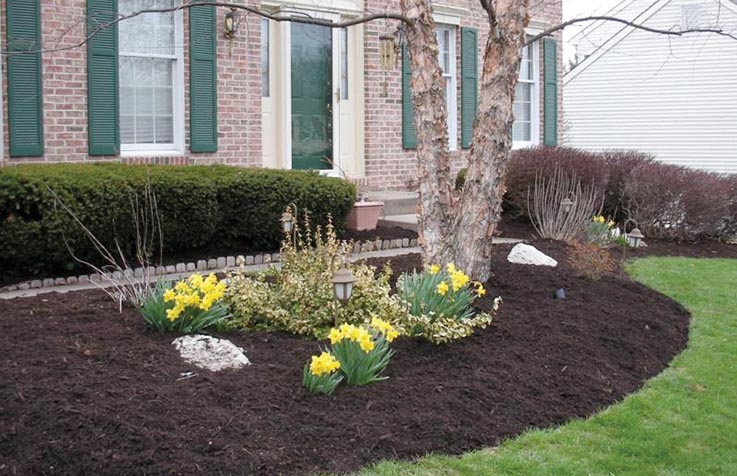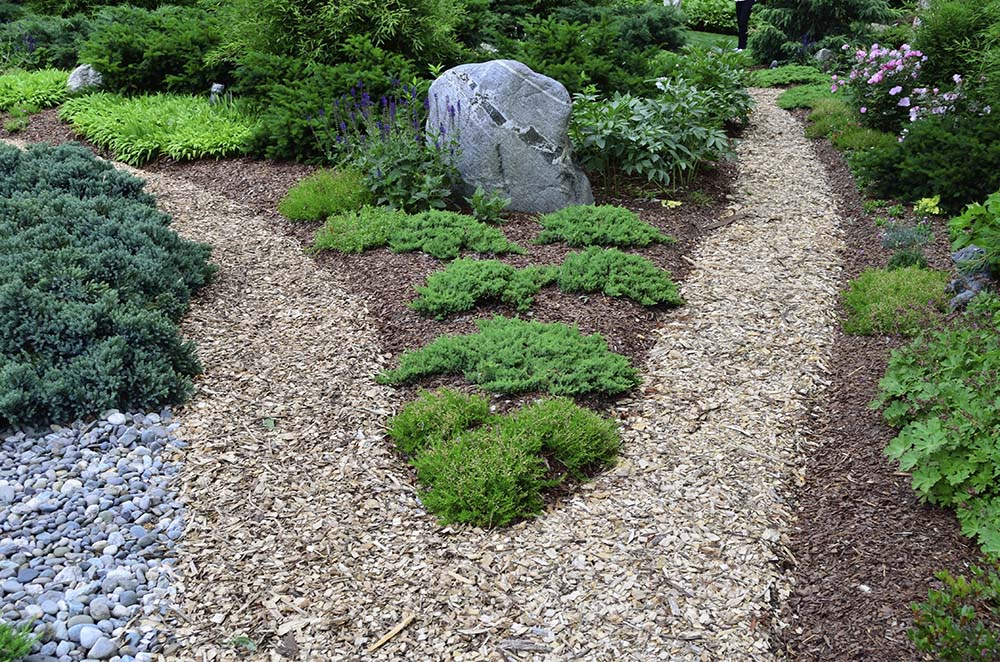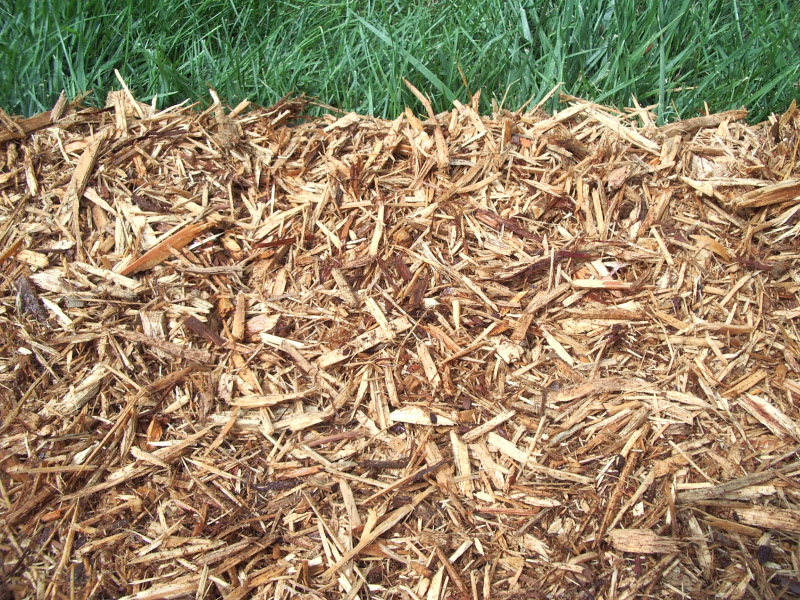Benefits of Mulch
(Content Writing for Sutherlands HomeBase, a construction and home improvement chain located in Kansas, Missouri, Texas and Louisiana)

Mulching your yard is a great way to keep your landscape plants healthy. By mulching you are protecting your plants and the bare soil and giving them many advantages over unmulched plants. Learn about the many benefits of mulching, the various types of mulch, how and where to mulch, and even calculate how much mulch you need.
Advantages to Mulching
Controls Weeds – mulch can act as a barrier, preventing sunlight from finding its way to the weeds and reducing their appearance. Be careful though, as mulch ages, it will turn into a soil like material that weeds can thrive in! Be sure to apply new mulch each year!
Retains Moisture – because mulch covers the soil, it helps limit evaporation. This is especially important in the summer when it is dry and hot.
Prevents Soil Erosion – in addition to retaining water, mulch also helps prevent the rain from washing the soil away. It breaks the fall of water and lessens the force of impact when water hits the ground.
Encourages Earthworms – organic mulch, such as wood and bark, encourage earthworms to move in. Earthworms are great for soil structure and nutrient cycling.
Beautifies your Garden – mulch gives a finished look and helps fill in empty spaces. It requires a lot less care then grass, groundcover or other fillers. It never competes with your existing plants.

There are many types of mulch materials such as wood chips and stone.
Types of Mulch
Organic mulches are natural and attract insects and the birds that eat them. They decompose over time and need to be replaces occasionally.
* Grass Clippings
* Hay and Straw
* Leaf Mold
* Leaves
* Pine Bark
* Pine Needles
* Shredded Hardwood Mulch
* Wood Chops
* Pecan Shells
* Ground Cover
* Hay and Straw
* Leaf Mold
* Leaves
* Pine Bark
* Pine Needles
* Shredded Hardwood Mulch
* Wood Chops
* Pecan Shells
* Ground Cover
Inorganic mulches do not decompose but they do not attract any types of insects, both pests or beneficial ones.
* Gravels, Pebbles and Crushed Stone
* Black Plastic
* Clear Plastic
* Landscape Cloth or Woven Ground Cloth
* Aluminum-coated Plastic and Foil
* Ground Rubber Tires
* Black Plastic
* Clear Plastic
* Landscape Cloth or Woven Ground Cloth
* Aluminum-coated Plastic and Foil
* Ground Rubber Tires
Where to Use Mulch
Mulching is especially important for new plants because of its ability to retain moisture while the plants roots expand. It also creates a barrier so there is no grass or other plants growing around new plants, allowing them to get all the nutrients from the soil around them. New trees should have a circle of mulch 3 to 4 feet in diameter for at least 5 years. Cover entire flower beds with mulch.
Mulch can also be used for trails and driveways and play areas.
When to Use Mulch
It is best to apply mulch right after your plant. Depending on the material, you may need to replace the mulch often. This is true for most organic mulches. Inorganic, such as stone, rarely need to be replaced. As the plants grow, less mulch will be needed.
How to Apply Mulch
Before mulching, weed the entire area. Spread mulch over the plant bed but keep it 2 to 3 inches away from the stems of woody plants (i.e. trees and bushes). Keep mulch 6 to 12 inches from walls. For trees, mulch 3 to 4 feet in diameter for new trees and 2 feet in diameter for each inch of trunk diameter for existing trees. The larger the area, the better because tree root systems can extend two to three times the crown spread of the tree.
Fine particle wood and bark mulches should be no more than 2 to 3 inches to prevent suffocation of plant roots. Coarse mulches such as pine nuggets can be as deep as 4 inches since they allow good air movement. Mulches made of grass clippings or shredded leaves should be no more than 2 inches to prevent suffocation or water restriction.
How Much Mulch is Needed
One cubic foot of mulch will cover a 12-square-foot area with an inch of mulch. Find the square footage of your bed (length times width) and multiply it by the number of inches of mulch that you need. Divide that number by 12 sq.ft. to get the total cubic footage needed for your garden bed.

[(Length of bed) x (Width of Bed) x (Depth of Mulch in Inches)] / 12 = cubic feet needed

